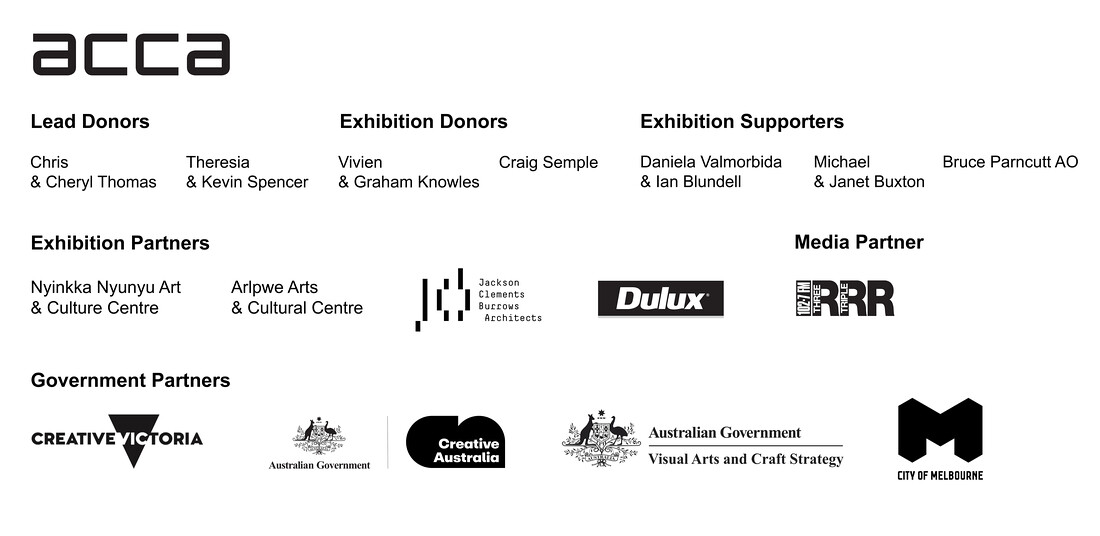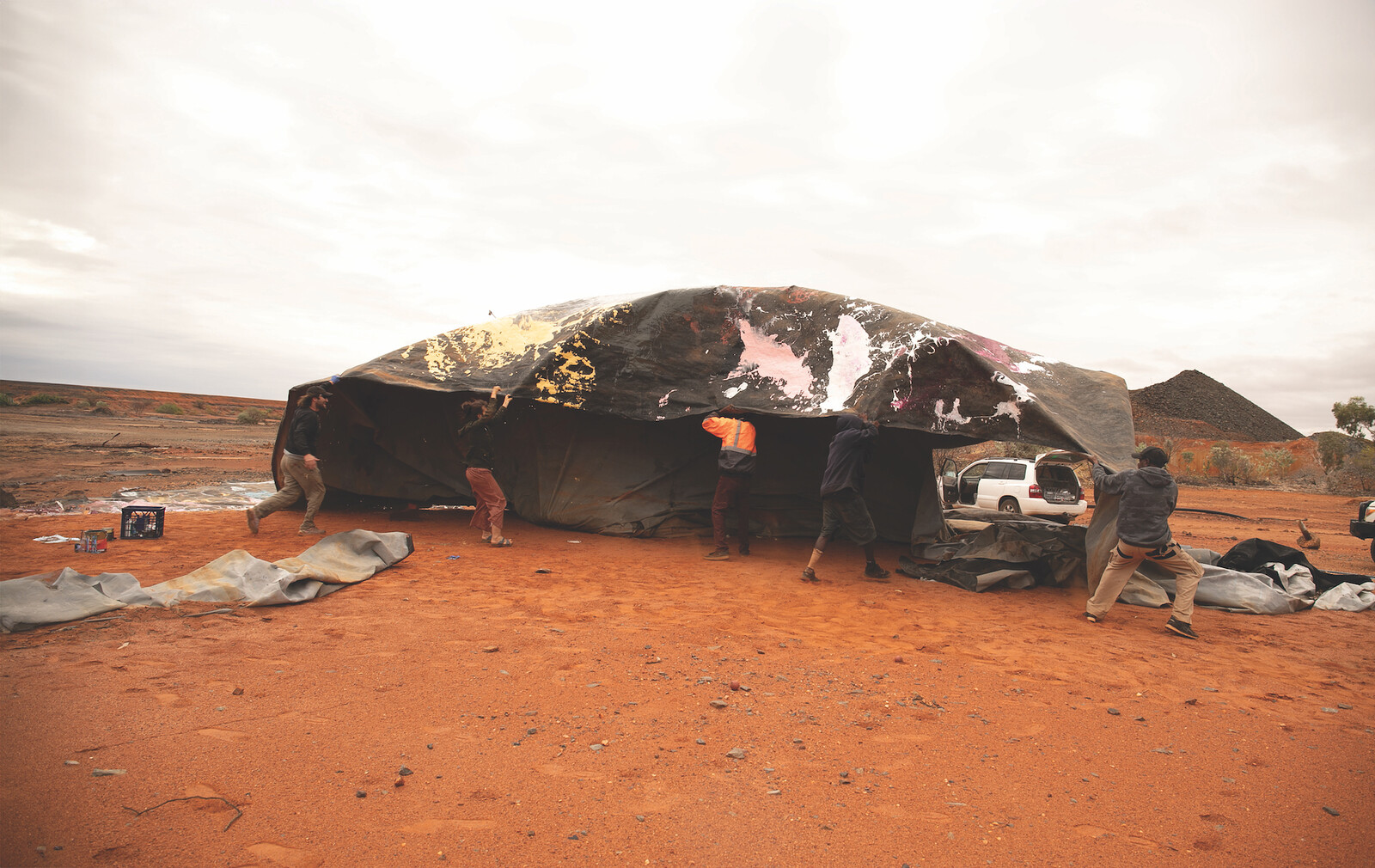Juparnta Ngattu Minjinypa Iconocrisis
September 21–November 17, 2024
111 Sturt Street, Southbank
Melbourne VIC 3006
Australia
ACCA is pleased to present the first major survey of Tennant Creek Brio, an artist collective living and working on Warumungu Country. Fusing First Nations cultural traditions, the industrial materiality of the mining industry, and local and global art influences, the exhibition asserts and re-imagines the artists’ cross-cultural identities, drawing upon the haunting wounds of post-contact histories, the renewal and remaking of cultural practices, and the collaborative resilience and audaciously punk attitude of a frontier community.
Encompassing contemporary artists from Northern Central Australia and Melbourne, the group first converged in 2016 when the artists initiated an outreach program at the local men’s centre, Anyinginyi Health Aboriginal Corporation.
Tennant Creek Brio: Juparnta Ngattu Minjinypa Iconocrisis references The Brio’s practice of reinscribing their experiences, cultural identity and mark making onto salvaged found materials such as oil barrels, car bonnets, solar panels, poker machines, television screens, and geological maps from the abandoned Warrego mine. Confronting the current state of polycrisis, of belief systems in conflict, and contested and scarring histories, the exhibition stresses an urgent need for truth-telling, future thinking, collectivity and action. Exploring themes of extraction, reclamation and collaboration, The Brio’s artworks reveal the deeply personal and complex intergenerational influences that continue to shape and entwine the artists’ lives, identities and future-thinking.
Warumungu, Warlpiri and English languages converge in the exhibition title Juparnta Ngattu Minjinypa Iconocrisis, which is indicative of the complex intercultural context of Tennant Creek, and The Brio methodology of collaborative creolisation and bricolage. Opening in Warumungu, Juparnta Ngattu conjures notions of ceremonial strength and power through image-making, while the Walpiri term Minjinypa means ‘cheeky one’ or ‘trouble(maker)’. Paired with the neologism Iconocrisis, this gathering of multiple languages attests to the formal, linguistic and material collisions inherent to Tennant Creek Brio’s creative and cultural practice, while highlighting their irreverent approach to bringing images, icons and ideologies into question.
Presenting a vast array of works created over almost a decade, Gallery One presents an ambitious, industrially scaled assemblage that channels the power and strength of The Brio’s image-making, centring a pertinent critique on coloniality and capitalism, and the subsequent social, cultural and political complexities and negotiations that stem from this. The Brio’s diverse mark-making features across a range of painterly, sculptural, installation, video, drawing and performance practices that highlight the cultural power and rebel-rousing attitude of Tennant Creek Brio’s contemporary art practice.
The exhibition is structured around various contexts: Gallery Two is dedicated to the Brio’s signature-style drawings, paintings and cultural markings inscribed on reclaimed geological mining maps that assert the artists’ cultural claim and connection to Country. Gallery Three presents a horizon of works which reference personal and ancestral connections, interweaving social and cultural perspectives related to culture and place, including a soundscape by Brio collaborator Eleanor JawurIngali Dixon. Gallery Four is informed by The Brio collective’s studio in an industrial yard on the outskirts of Tennant Creek, a contemporary extension of the jangkai, or men’s space, as a place for keeping culture strong.
Artists: Fabian Brown Japaljarri, Lindsay Nelson Jakamarra, Rupert Betheras, Joseph Williams Jungarayi, Clifford Thomson Japaljarri, Jimmy Frank Jupurrula, Fabian Rankine Jampijinpa, Marcus Camphoo Kemarre and Eleanor Jawuringali Dixon, Lévi McLean and Gary Sullivan.
Cultural Advisors: Joseph Williams Jungarayi, Jimmy Frank Jupurrula
Curatorial Advisor: Erica Izett
Curators: Max Delany, Jessica Clark, Elyse Goldfinch, Shelley McSpedden

